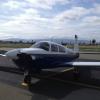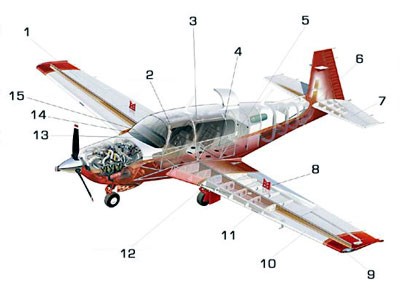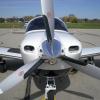Leaderboard
Popular Content
Showing content with the highest reputation on 04/22/2018 in all areas
-
Tommy, the plane I was in, a 2018 Mooney Ultra ovation has the Garmin NXI that will show lightning strikes, along with NEXRAD ADSB and Sirus XM. That still doesn't relieve us of our duty to do a proper weather briefing, which we also did. aviationweather.gov is a site we use here as well as weathermeister.com. Some rely on a foreflight briefing, others use SKEW T charts to predict the instability that leads to wild rides. Here in the Colonies, we are charged with gathering "all available information" to insure the safe outcome of a flight. Miss one thing and we could be found "GUILTY" (Phrased in an NTSB report as "a contributing factor was the pilots failure to gain all available information ....." as we have in our culture, an insane appetite to get blame laid, even on mother natures acts of vengence. The question you asked is the topic of Bachelor's of Science degrees in thesis in meteorology, and as a pilot, we are all just freshmen when it comes to weather and lightning predictability. If you find yourself suddenly in a bad place in a cloud without on board aids, the most frightening but best way is to plow straight ahead. You will probably exit the cell faster that way4 points
-
See if this helps calm some fear of unseen oxidation between aluminum layers... Oxidation between layers of aluminum, when it gets to an important level, is often detectable to the eye... Aluminum oxide is a higher volume than the solid aluminum. In other words the volume increases significantly... Volume increasing between layers has a tendency to pry the layers apart, stretching and breaking the fasteners that are holding the layers together... the fasteners are designed to stretch really far before they can break in a tensile mode... It is not possible for the fasteners to keep the corrosion from expanding... the chemical expansion is a very powerful force... The oxidation can’t seep out. If it does it will leave a trace... (smoking rivet style trace) even though smoking rivets are an abrasion/wear effect and not-corrosion related... So... If you look at the spar and all the fasteners are still there... that is a good sign... On the other hand.... If you see a row of rivets, and you notice one (or two or more) is missing... that is a sign to look for what made that guy get away... or, you look and see the nice flat, straight, layers of aluminum are looking expanded enough to have a non-uniform gap or curvy layer in an area... that is worthy of closer inspection.... It is not likely to get the interlayer oxidation to occur, as something has to let the oxygen in there to begin with, and have the catalyst near by, water, relative humidity can be a catalyst as well... One may need to have an actual investigation before claiming the failure is a design flaw... There is a lot of design put into these things... with Plan Bs to each design step... Materials that are used. procedures and processes for making the parts. Assembly procedures. maintenance procedures. Documentation procedures. Serialization procedures. There is often, acceptable depth of oxidation that can be repaired and or re-used when treated properly. All of this gets done every time a plane gets built and maintained... when the rules are followed. Modern manufacturing Science has left very little to be a surprise... Computer science has made it incredibly easy to cross check serial numbers all the way back to the day each part was made, from which batch of raw materials the part was made from... and a complete record of inspection for each part... The first thing owners would want to know... does this failure possibly affect the plane I own/fly...? The second thing some owners want to know... does my maintence get done properly, down to the last documented detail...? The FAA and user groups are pretty good at narrowing down the causes of such failures, and, ruling out, the larger population on technical reasons... and unfortunately (sort of), ruling in, certain planes that have shared a common maintenance procedure or part... Is this enlightening? PP thoughts only. Not a mechanic... may have designed and or built non-flying machines in another lifetime... Best regards, -a-4 points
-
Things for a PP to possibly Keep in mind.... a pair of ILSs would be better than a single ILS. In the event a display goes down or stops working for some reason... Waas approaches are really cool to go with the ILS. If you have these approaches available in your neighborhoods... For weather... keep in mind... that some type of thunderstorms are imbedded in a whole cloud system, obscuring them from view... Plowing through one can be a good idea, until you find the next one is bigger and stronger.... Some types of weather are both... regional seasonal There are two types of onboard weather avoidance we have available... Strategic/Planning: XM and ADSB, great graphics and usability, but too aged to used in real time... Tactical/avoidance: Strike detector, great to use in flight to avoid some thunderstorms... There are some limitations that come with those... Strategic Limitation: Some graphic weather info can be broadcast 15 minutes old without much detail for how old the data actually is... Tactical Limitation: Some Strike detectors can only show the storm in front, masking/shadowing the next storm behind it.... Killer weather patterns come about with things like spring cold fronts... wide spread lines of thunderstorms... that are 50 Miles deep and hundreds of miles wide... completely embedded in IMC... Anything that spawns tornadoes is something to avoid by hundreds of miles... Spring thunderstorms are pretty good at throwing large pieces of hail around... Another part of the planning for equipment comes with how far away are your alternative airports... do they exist in different types of weather patterns... near oceans, near mountains... think about your alternatives... traveling to get to VFR weather because of a single piece of piece of equipment has failed traveling to get to better/higher IMC to use a VOR approach because your ILS receiver/antenna has failed... radar approach... Got one of these? Just things to consider when deciding what to put in a panel. Have a Plan B for everything... Alternators fail vacuum pumps fail Radios fail Antennae fail (incidental grounding by ice) A PP can feel pretty alone with widespread thunderstorms and hundreds of flights requesting weather info from flight watch.... A strong weather system can really overload any ground based / voice radio delivered weather info system... PP stuff I have picked up along the way. Not a CFI or weatherman... Best regards, -a-3 points
-
Every metal wing Boeing is designed the same way as our Mooneys, wet wing technology. Even 50 year old 727s have wet wings so the design style is well proven as doable. As mentioned, the difference "may" be in inspection technique and interval to find corrosion. I have always found the mind set we exhibit toward 50, sometimes 60, year old airplanes (when viewed from the position of maintenance) and how we view automobiles quite interesting. We invariably drive cars that are less than 6-10 years old (FOR RELIABILITY) yet we think nothing of jumping into a half century old airplane with lots of "deferred" maintenance or with maintenance we as amateur mechanics have done (when a lot of times we don't even work on our own cars, hangar fairies?) and fly across the country over hostile terrain. Its mind boggling. Probably needs another thread here.3 points
-
I renewed 3/10 and switched from Starr to XL. 2017 - Starr - $2575: $120k hull / $1m/100k subs - New pilot w/ ~80 hours, 0 complex, 0 Mooney (required 5 hrs transition + 5 solo) 2018 - XL - $2,200: $120k hull / $1M smooth - ~250 hours w/ 160 Mooney time. I pushed really hard for a smooth policy and made that my number one ask for my broker. I had also been told an IR was required and it was my goal, but lost 2 months due to an AOG issue, so didn't get it done in time. XL was the only carrier that offered a smooth policy. BTW, did my IR checkride today, woot! On to commercial..3 points
-
Clarence, In my business I’ve had to complete a ton a failure analysis (over 40 years worth). I absolutely come unglued when one of my techs runs their mouth before proper and complete research is done. Many times, once I’ve completed my research and determined the root cause of a failure, those techs want to completely forget how foolish they looked in talking before knowing all the facts. A few of those and they now shut up until all facts are discovered and evidence is examined. A few now even enjoy the process and satisfaction of a result that is backed by facts. Seems not too long ago I saw you post thoughts on a wing that MIGHT NOT need to be replaced. I chuckled at the time, thinking why don’t people digress to those “in the know”, and making a mental note to self: “let’s see how this turns out”. (+1 Clarence). Needless to say you’ll look hard and long for any comments from me on situations where the REAL ANSWER can only be determined with much research and investigation. Been there, done that. Tom3 points
-
80 knot headwind? On April 14th I was sitting on the ground at Dickson TN as a cold front moved through, bringing thunderstorm cells and lightning and some serious downpours with it. I knew if I waited a few hours, it would be gone and the only thing between me and my home base of KTRL near Dallas would be light rain, IMC, and very strong headwinds. The forecast was for 40 knot headwinds. I was not looking forward to my 2.5 hour flight turning into 3 hours, but I was willing to accept it as a necessary evil. I filed my IFR flight plan, got my clearance, and took off into the clouds, climbing to my cruising altitude of 8000 feet in mist and light rain. The ground was sort of visible below, but water streaked the windscreen. (I should mention here that I can hear you saying "you dork, why not fly at 4000 feet and take a 20 kt reduction in headwind?" My answer is that my M20A doesn't like to fly that low. It produces > 200 degree differences in EGT between cylinders because of the lousy job Lycoming did designing the intakes, and that sets off my EI engine monitor alarm. I never fly that low.) So upon reaching cruising altitude, trimming everything up, and leaning, I settled in for my 3 hour leg to KSUZ outside of Little Rock. And I started watching my ground speed to see if the 40kt predictions were correct. But instead of seeing something like 105 kts of groundspeed, I was seeing 90, then 80 knots. Then 70 knots. My GPS was telling me it would be 3 and a half hours flying time. I was getting more and more amazed at the hellacious headwinds. Then my Bitchin' Betty voice annunciator interrupted me as she spoke into my headset "Check Engine Analyzer". I quickly glanced at the engine analyzer and noticed that the #3 cylinder was running over 200 degrees richer than the rest. I tweaked the mixture control, but it didn't make much difference. "Check Engine Analyzer" she said again. At this point I looked at the manifold pressure gauge. Wow, 15 inches. The airspeed indicator said 115mph. Ground speed was down to 65mph. Hey wait a minute, I should be seeing a lot higher indicated airspeed and MP at 8000 feet. I quickly concluded there was something wrong with cylinder #3 and that was robbing my engine of power. This was not an 80 knot headwind. This was an engine problem! Many of us learned to fly in a Cessna 152. I still remember how the approach to landing power reduction was drilled into my head by my CFI, Bill Riggins, in 1983: Abeam the numbers, pull carb heat, reduce throttle to 1500 RPM, hold altitude until the airspeed drops inside the white arc, then lower one notch of flaps. Yada yada. When I started transition training in my M20A, my instructors told me I will rarely ever need carb heat during approach to landing. And indeed, in 12 years of flying, I have never needed carb heat. But I remembered someone saying, if you're having difficulty in a carbureted Mooney getting the cylinders to have a more balanced mixture, try adding carb heat. So I did. And I watched the manifold pressure climb. 16, 17, 18, 19, 20. And the airspeed climbed. And the groundspeed climbed. And the #3 cylinder EGT rose. I looked at the outside air temperature gauge. 56 degrees. Couldn't be carb ice. Could it? I turned off the carb heat and watched the engine power slowly begin to drop. 19", 18", 17". OK, carb heat it is. I flew with carb heat on until I popped out of the clouds. At that point, I tested carb heat and found it wasn't needed anymore, and I continued my flight as usual. Greg Ellis reminded me of the graph showing severe carb icing possible from 25 degrees to 60 degrees with humidity levels around 75-100%. I was in probably 100% humidity at 56 degrees OAT, so very much in the danger zone. I'm not used to needing carb heat at cruise power settings, but in IMC in that temperature range, it may be worth thinking about this a lot more frequently in flight. A friend of mine crashed and burned in his Pietenpol in Florida because of carb ice. In Florida. It can happen anywhere if the conditions inside the venturi are suitable for ice formation. In this case it happened fairly slowly, but I suppose it could also be much more abrupt. "Take heed of thine airspeed, lest the ground rise up and smite thee. And take heed of thine dewpoint, lest the carb ice up and smite thee!"2 points
-
Yep, just got back home from 1.5 hours formation time this morning I've never been IMC in formation, but we have filed IFR for a flight of three and ATC didn't have any questions. We started up, picked up our clearance as usual, taxied out to wait for release, and took off. Lead was the only one talking to ATC but 2 and 3 could hear the clearance was for the "flight of 3". About two hours into the flight we started getting into IMC conditions and since we had three separate destinations we asked ATC to split us up. It was easy and very straight forward, as if they'd done it many times. I'm sure I'd be fine descending through a layer while in "close trail" as we call it. This morning we went into close trail to climb out through a broken layer. It allows for freedom of maneuvering to get up through a hole and out on top. We were in class Golf, so "clear of clouds" was the requirement.2 points
-
If you do not have the original, just make a wooded (or clay) model, use some mold release, and make the fiberglass piece. You will want to use a non-flammable (Class I) flame retardant resin. John Breda2 points
-
One oddity of spar design, is... The selections that need to be made. Material scientists ( or engineers) get to choose... Material attributes... strength weight Volume cycle limitations age limitation corrosion susceptibility technology available the year the plane is built COSTS Material selection. The aluminum that is selected for the spar caps... the thick plates that are stacked up reinforcements.... Plus column.... High strength Light weight Very flexible Minus colum... Susceptible to intergranular corrosion We have two types of corrosion to be aware of... Filiform... a surface corrosion, sand and repair as needed... common occurrence on old sheet metal with failing paint and coatings... once started, it progresses further along the surface... Intergranular... a form that progresses into the aluminum structure, destroying the connections between microgranules of metal... once started, it progresses deeply into the molecular structure of the piece. Mooney sheetmetal (T-clad?) is designed to resist the Intergranular type of corrosion. The surface layer (cladding) is pretty effective and not very deep... don’t accidently sand this layer away... Mooney structural aluminum is incredibly strong and more susceptible to the Intergranular type of corrosion. It is not as much as a ‘design flaw’ as it is a forced design compromise... Either way, if you see corrosion starting... this is your opportunity to get it stopped.... the sooner the better... Timing... It typically takes years for corrosion to form and spread. This is why the annual inspection is so valuable and important. wait too long to fix a filiform challenge, repainting a bubbled spot becomes repainting a much larger surface area in a year... wait too long to find and fix an Intergranular challenge, the mechanic has to measure the depth of the corrosion before fixing it... Allowable depth is pretty small. If you see corrosion starting, you don’t want to wait for the annual to arrive to take care of it... Reading the MM can be very enlightening for what needs to be done or what can be done when this stuff occurs... keeping your eyes wide open when doing the preflight, look under the rug in the back seat to see the most exposed piece of structural aluminum we have... a stacked spar cap, with its coating worn thin from little feet, beach sand, and soda spills..... Ordinary PP knowledge only, not a material scientist or mechanic... Best regards, -a-2 points
-
Just a small jaunt down to southern Delaware for some, now in season, Maryland crab cakes. View of the Chesapeake Bay Ocean City Maryland off in the distance. Sent from my iPad using Tapatalk Pro2 points
-
You need a legal primary to fly from the FAA perspective. If your primary systems fail, then anything left is fair game to use in the event you utter the magic E-word. the real question is this, I think... if the EDM-830 is not certified for primary (which it isn’t), then you need to keep the original ships gauges. If that’s the case, the you need 2 senders... or a splitter.. for each indication (oil p, oil t, fuel p, etc). Some might say that Is redundancy... but in the case of a fluid sender- If one fails materially, it’s possible to lose all pressure on the system. So you might actually be increasing risk by adding a second monitor. Crazy, right? rocket- I know you’re loving formation flying. The best “ifr backup” we have in the fast-jet business is another jet... lose your primary flight instruments? No problem, just fly “close” (“parade”, if you’re a navy guy) formation off a flight lead, through the clouds on an instrument approach, and once he achieves VMC, transition to an all visual approach. Just something to consider if you’re really in a bind. Honestly, not sure about the legality of that in the GA world- but it’s a normal and expected “thing” in the USAF and USN while In the US airspace structure so I’d suspect that it’s legal by FAA standards. We call it (predictably) a “formation approach.”2 points
-
On the 231, no ground will fail to the high side. I personally verified this.2 points
-
I had this problem on my 231. --The engine could be off and the pressure would be in the green arc, but only sometimes. And in flight, it would start off normal, and then it would go pegged high, and then eventually return to normal. It was impossible to trust the gauge. It turned out to be the ground. Basically, the pressure sensor is a cylinder at the end of a tube. One lead on the sensor goes to the gauge. The clamp surrounding the sensor is the only ground connection. I had the mechanic clean the sensor and re-tighten the band around the pressure sensor. Its been perfect since then. --Maybe yours is similar. Let us know.2 points
-
Good photos, Richard. But screw length is measured from below the head. Also, don't push things onto the recessed part of the calipers, the outside is the calibrated zero position (the part of the jaws that touch when reading zero). Nice calipers though. I've just recently converted from vernier to digital myself (despite being near sighted, my closeup visual acuity is waning . . . Getting old isn't easy, but it does beat the alternative.). 8-32 is the important part, length looks about 3/4". Don't forget the nut.2 points
-
Mark, you need CMI part# 642892. You can order directly from Air Power, Inc. $10.37. I keep a few on hand. http://www.airpowerinc.com/productcart/pc/prodparts.asp?prodid=489791&catid=1&subcat=108 Steve2 points
-
Some pics of my salvage wing section, with section cuts through the spar. Sent from my LG-US996 using Tapatalk2 points
-
I flew the highest time 747-200 that ever existed, or maybe ever will exist, about 2 weeks before it went to the scrap yard. N748SA, (ex PH-BUH) had about 135-137,000 hours and ~26k cycles..... All the way across Africa and a couple thunderstorms. My buddy Mark was the FE on the last flight, to the boneyard at Mojave. Over AZ, the old girl wasn't done yet, they took her up to FL450 (wrong way) and set off the clacker at .92 Mach.Still had some thrust left over. It still made book speed and fuel flow...Then the long, slow, decent down to Mojave, and floated the landing, she wasnt done yet, , for one final stop. http://opennav.com/forum/airchive/5200853 http://www.airliners.net/forum/viewtopic.php?t=13484292 points
-
Paul, My thoughts were solely that you could be engaging in your own version of transition training from C172 to an M20C. Some people actually do this from time to time... or they get some transition and skip the Mooney specific experiences like stalls and go arounds.... Without knowing whether this plane had seen action in years... As a younger guy I expected to land off-field... As an older guy I put in a fair amount of extra effort to avoid all that... Please keep sharing your experience with your M20C. There are a bunch of us around here that have started our Mooney experience with the C... Some of us have really taken the C to the next level. There is a lot of info around here to bring you up to speed with all the things there are to know about Your Mooney. To Check your tank vents, they are simple metal tubes under the wing... with the cap off, you should be able to blow air easily into the tube... a long flexible wire can snake all the way to the tank. check to see if there are any bugs in the tube... bugs usually can’t get more than a few inches inside the tube... If the tank shows pressure while out in the sunlight... open the tank and you hear air escape... this is a sign of a blocked tank vent. Another sign.... the wing skin starts to oil can. It gets sucked in and starts to crush... really tough on the fuel pump. The blocked vent comes from my M20R experience. I never blocked a vent with the M20C... Got any technical in you’re background? Mechanic or engineer? Got any pilot experience in your back ground? CFI, commercial, ATP? It’s fun getting to know people around MS. We have such varied backgrounds... Best regards, -a-1 point
-
I’d love to do that, it’s on my dream list.. which I’ve been kicking down the road for the past couple years. Sadly it won’t happen this year (again), as I’m moving down to Phoenix and transitioning to a new airframe this summer- probably won’t have much time for the mooney1 point
-
BTW, The best thing you can do for your turbo is change your oil often and don't run your TITs to high.1 point
-
I would have your mechanic inspect it. Pull the intake coupling off and inspect the compressor wheel. Feel it for smooth rotation and end play. Use a borescope up the tail pipe to inspect the turbine wheel. Inspect the turbine housing for cracks. This should all be done at annual anyway. If all is OK, Then I would say if it ain't broke, don't fix it. It should make it to TBO.1 point
-
Flight lead carries the squawk code. The rest of the flight has transponders off. You should really come fly formation with us. Come to Oshkosh and fly the Caravan arrival with us.1 point
-
I can think of same ways to do it, but getting the wheel up onto the platform would be a challenge. Maybe figure out a way to adapt this to a towbar? I’m not sure how the wheels would hold up though.1 point
-
It's all in the economics. If you have a plane that will only sell for $30,000, and could be sold for $60,000 as parts, it would be a no brainer. The closer together those numbers get, the larger the incentive to sell intact, to avoid the headaches and time it takes to sell the parts. I don't like it and would much prefer to see the plane stay in the fleet, but if it was my money involved....1 point
-
It's pretty easy to see, especially here in Texas where the ground is flat, the difference between stable clouds and unstable clouds. When we get low clouds and solid overcast, it's usually very stable. There might be some light rain or just fog/low clouds. You can be confident that there is no convective activity anywhere within range of full tanks. And likewise it's also easy to see when it's unstable and therefore convective. Texas thunderstorms are legendary and we give them a wide berth. Here's an example. It doesn't look like we gave it much room, because it was filling in behind us pretty quickly. We had plenty of room and stayed out of the turbulence. But these are easy to see. An IFR flight but VMC the whole way. https://flightaware.com/live/flight/N252AD/history/20180403/1630Z/KGTU/KADS1 point
-
No, I just bought the Baron in January of this year. A friend of mine is buying the Mooney but he isn't quite ready for it so I recently renewed insurance on the Mooney.1 point
-
The Acclaim prop will make a new plane out of the ol O1. Expect about 8 kts gain in cruise.1 point
-
If you want to fly with it removed you can log it and update the w&b. I did that and then let my shop handle the install sign off. You will get paperwork back from c&l that you can attach to the logs. After reinstall you can remove the temporary w&b form from the poh.1 point
-
Marauder, shortly after I snapped that photo, my co-pilot (wife) noticed that the fuel remaining and tank indications did not agree. I forgot to enter added fuel before t-o. We got out the manual and figured out how to add fuel on the go. The device and its interface seem really well thought out. The K-factor for the fuel flow sensor was duly noted before installation of fire sleeve, and entered into the manual and device. I did program the %power as described in the manual using values from the POH. However, there are many factors that go into the power calculation, Without a torque measurement, I see that indication as a "suggestion". It says 100% on takeoff ;-)1 point
-
I have always said if I run into someone named “we/us/them” I am going to Punch “them” and walk away...1 point
-
It's hard to believe an aircraft that just went through an annual and then flew is a candidate for salvage.1 point
-
Not a chance it’s certified. It only has a single comm radio. I don’t think it would be possible to have a more basic panel, and still be legal to fly in the mode c ring.1 point
-
That’s about right for that Propeller. A C14 McCauley is a very time consuming Propeller, as they are threaded an the Ferules have to be removed, reinstalled, restaked an Drilled. Lots of Work in that one process. Also, keep in mind the Blades in a C14 are like finding hens teeth these day. Try an keep the grinding an fileing to a Minimum.1 point
-
Well for today it was my flight review so my instructor and I made our way to STS for lunch. Once we cleared the ridge it was time for some slow flight maneuvers boy that sure does a number on the CHT then cleared to straight in for landing after a very disappointing BLT we started out departing 20 at about 300agl he took the controls so I could put on the hood for some instrument work then we did a bunch of heading and altitude changes tracked a couple vor's crossed the ridge towards home with more heading and descents until we were entering the pattern and on the midfield DW let me have my eyes outside again. Nice to be set for the next two years and now on the list is my ECI on the prop hub. Definitely want to do more hood time but at least I feel confident that if I were to fly into IMC I would be able to get out of it of course if I were I would engage the auto pilot and make my 180 with the heading bug on the panel. Doing all the hood time was a great workout today i imagine since I did the whole journey unable to see out the window and was just following my instructors directions was kind of like being in IMC until we were at pattern altitude on the down wind and right on speed. Good times.1 point
-
Good point. I admittedly didn’t pay attention to the avionics. That said, people are asking that around my area for much much worse condition Cs. Case in point - https://phoenix.craigslist.org/nph/for/d/mooney-20c-mark-21-aircraft/6555462708.html i looked at this one today (its at my field). It’s in pretty good shape, cosmetically, but it’s stuck in 1972. I doubt he’ll get 39k for it. Although some part of me hopes he does. It just means mines worth more to the right buyer lol.1 point
-
I sing too. Just got finished in a production of The Music Man and was part of the barbershop quartet. Good to know, I thought about that afterwards, but by the time I thought about it I had already put it back in and didn't feel like taking it out again just to get a new picture. I think they were these $19 ones from Lowes, but it looks like you can get the same ones for $16 at Home Depot. https://www.lowes.com/pd/General-Tools-Instruments-3-in-Digital-Caliper/3138565 https://www.homedepot.com/p/General-Tools-3-in-Carbon-Fiber-Digital-Caliper-1433/3003839941 point
-
Chrixx, Looks like somebody used a big piece of temperature sensitive tape to hide some minor surgery(s) of the past... temperature sensitive, meaning it shrank when it got hot... Doing it right, once isn’t so bad... repeating the work is when it gets expensive... Especially when removing and replacing the same instruments, the hours add up one amu at a time... Hendricks had an early start as an MSer. He has personal Mooney experience and a machine shop... His website includes some nice pics of actual Mooney IPs... If you know which direction you are most likely going... it may make sense to define your end product and get a panel or two cut... With an F, I think I would go with the Marauder model... then fill in the hardware as the hardware becomes available... Or an E, Bob has a pretty snazzy panel layout... Or a C, there is a really cool Swiss layout... Or an O, Steven has the panel I would start with.... GSXR, Our 252 friend in TX has the best hardware acquisition strategy... one piece at a time...from various sources... The panel sheet metal is pretty low cost if you can do the one and done routine... get new mounting hardware, select the color... Always make forward progress, not enough dough to do things twice... my own CB philosophy... really great if you have a working relationship with a mechanic... PP thoughts only, not a mechanic. Best regards, -a-1 point
-
Interesting second pice of evidence that a ungrounded or improperly/dirty ground to the sensor can cause the gauge to fail high! Matching Peter’s original description... Nice added detail Chris! Best rgeards, -a-1 point
-
Nice work, Richard! writer mechanical skills pilot businessman What other skills do you have? Best regards, -a-1 point
-
I ended up going with the JPI EDM 900. Originally I wanted the EI CGR-30P, but the same problems I needed a second gauge either at least for the fuel level or a full CGR-30C. The 900 was $1000 less than having both instruments, and for now I don't need to do any panel cutting, tentative plan is to redo the panel next year. Here's the worlds worst mock-up. Behind the 900 was the Electric Backup AI, which had no battery, so I'm switching to the RC Allen electronic w/ battery over in the TC position.1 point
-
Both scenarios ok as long as the Mooney remains in the hangar.1 point
-
Hendricks Manufacturing will build a partial panel replacement for $295. I'm sending the existing two pieces in. Problem solved (with minimal opportunity cost). Will post pics of the results...1 point
-
1 point
-
Agree on the sales numbers but to my knowledge he hasn't parted any out...It takes a lot longer to get money out of one that way versus letting it fly away after a sale. Without corrosion or hail damage, I think selling it whole will be far less hassle and ultimately more money since he'd likely have costs associated with disassembly, inventory, storage, shipping, taking calls for $50 parts, etc. It might take years to get all of the money out of it that way. Sent from my LG-US996 using Tapatalk1 point
-
If the airframe is clean with no corrosion I can’t see out parting it out will make you more $. Obviously lack of logs, gear up is going result in a below market value but I still put it on the market and see what interest you see.1 point
-
1 point
-
1 point
-
All gone. Not sure in that the airplane was reweighed after my upgrade and I picked up at least 10 pounds of useful load. Then picked up another 6 pounds with the change to LED strobes and nav lights.1 point









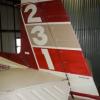
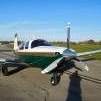
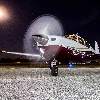

.thumb.png.7c67574d7b28f67b0b4a17760919b1ac.png)

